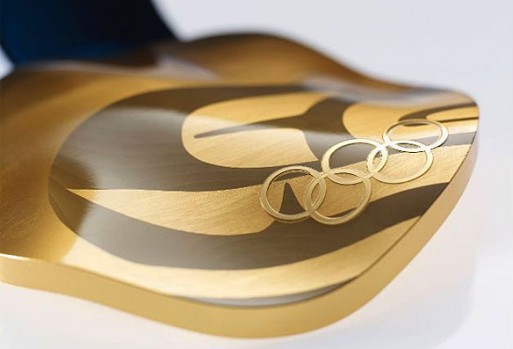Team:Alberta/Achievements
From 2010.igem.org
Gold Medal
Design and Document BioBrick Parts and DNA submissionWe characterized and uploaded 31 new parts to the Registry of Parts. These were:
- 11 Plasmids
- 15 ORFs
- 4 Linkers
Beyond our additions to the Registry of Parts, we also have parts that will work with GENOMIKON that could not be uploaded to the registry because they are created from oligonucleotides.
BioBytes 2.0 Assembly MethodThe BioBytes 2.0 assembly method was engineered to allow for the fast and efficient assembly of BioBytes into larger constructs. This method was demonstrated successfully in multiple on-bead assemblies, which included the construction of a 12kBp long octamer and construction of multiple plasmids that were effectively transformed into E. coli. The successful construction and transformation of E. coli with the plasmids created using the BioBytes 2.0 method was a major accomplishment of this year's project. All of our parts have been tested in PCRs and shown to produce a product of the correct size
Demonstration of New PartsAll of the 31 parts uploaded to the Registry of Parts are new and conform to the BioBrick standard. All of our RFP plasmids work as we designed them to and can be used to rapidly create BioByte 2.0 parts. These BioBytes can subsequently be used to assemble DNA constructs.
Characterization of New PartsAll of the 31 new parts that were uploaded to the Parts Registry were tested extensively, as this was required for their operation in the BioBytes 2.0 system as documented. All the parts were checked using PCR and gel electrophoresis to ensure proper size. The untransformed constructs that were made, including the octamer, were shown using gel electrophoresis to be of expected length. All of the parts that worked in the transformation experiments have been shown to work in vivo. This also shows that they all work within the BioBytes 2.0 assembly standard.
Helping Other iGEM TeamsMany of our team members completed many of the online questionaires that were distributed by the other iGEM teams. In addition to this, we sent in our funny pictures to the Cuckoo Clock competition.
We also had a two day conference, aGEM, with the University of Calgary and the University of Lethbridge. At aGEM, we constructively criticized the other teams' projects and provided helpful insights into the respective strengths of each teams' projects. We also met with a variety of professionals involved in the synthetic biology sector and conversed with them regarding their thoughts on synthetic biology and our project.
Development of The BioBytes 2.0 StandardThe BioBytes 2.0 standard was designed and developed by our team for this year's competition. It allows for the rapid assembly of BioBytes into larger constructs. BioBytes 2.0 does not require the production of a new BBF standard, as BioBytes 2.0 parts are BioBrick compliant. For more information on the BioBytes 2.0 standard, see our BioBytes 2.0 page.
GENOMIKON: The Educational Tool-KitThe major focus of our project was to create an inexpensive synthetic biology tool-kit that could effectively be used in a high school setting. We have tested our BioBytes 2.0 Assembly Method with a group of high school students. In the course of an afternoon, they were able to successfully construct a 4-Byte plasmid, which was transformed into E. coli. This represents a huge innovation beyond the current capacities of high school labs and is sure to garner a wave of excitement in not only synthetic biology, but in subsequent student generations.
Special Prizes
Best Human Practices AdvanceOur project cumulated in the idea of GENOMIKON, an educational tool-kit that allows high-school students to design their own plasmids using our online lab manual [http://www.genomikon.ca GENOMIKON.ca]. But GENOMIKON doesn't stop there, it then opens up a world of possibilities by allowing the students to create the plasmids they have designed and transform them into E. coli. This is truly an innovation in the way molecular and synthetic biology are taught to the upcoming generations of students. Aymen Saidane, one of the high school students who used the kit, described GENOMIKON as the "Application of what [he] learned in high school". Although this innovation is a huge step, it will not change the future of education if it cannot get into the hands of students, so our team also created a hypothetical business plan that outlines the entry of GENOMIKON into the markets. The business plan can be found distribution analysis and a detailed look at our human practices achievements can be seen on our human practices.
Best New StandardThe BioByte 2.0 standard is an innovation in the way DNA pieces are assembled into multi-piece constructs. With the BioByte 2.0 system, all the parts that are created still fit the BioBrick standard and as such offer a maximum utility to users of the Registry of Parts. The BioByte 2.0 method is:
- Fast -The addition of a piece to a growing construct takes 7 minutes.
- Efficient -The BioByte 2.0 construction system was modeled as 96% efficient and has produced plasmids that have been successfully transformed into E. coli.
- Modular -The BioByte 2.0 system allows for the production of your own BioBytes by PCR, which can be cloned into our RFP plasmids or used directly in the assembly of a DNA construct.
- Sequential -The BioByte 2.0 system's sequential addition of parts and anchoring to an iron micro bead allows for complete control of the construction of your DNA assembly.
- In Vitro - By making BioBytes 2.0 an in vitro system it allows the system to be specific and fast. The parts that can be made allow for the in vitro production of plasmids that can be cloned into an organism to interface our in vitro system to living systems.
 "
"

